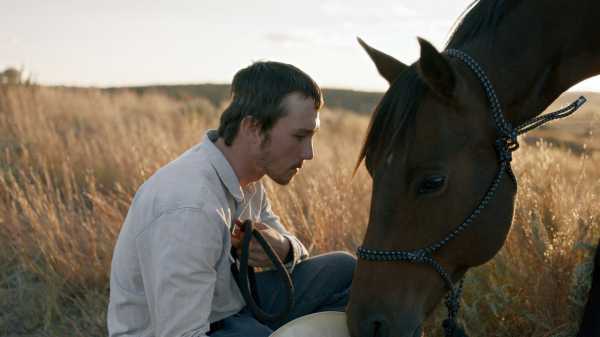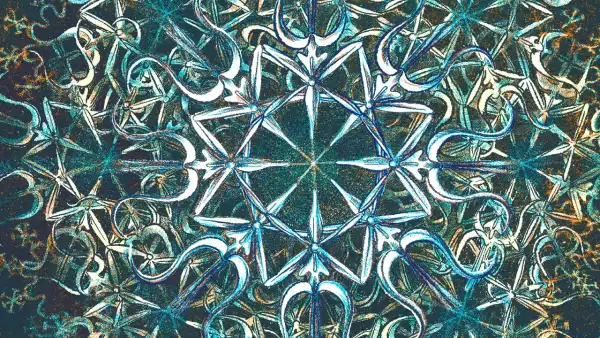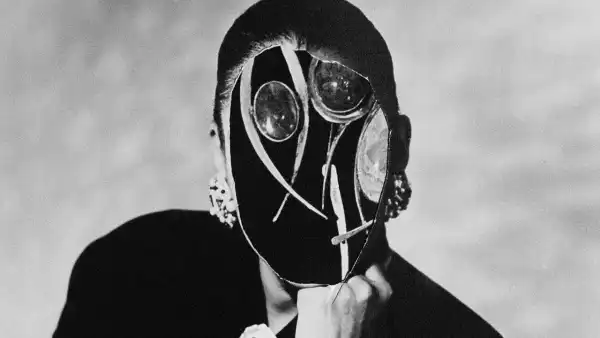
Jandreau Brady knows more about twenty years, about horses than most people of any age know anything about. It shows a wonderful practice this knowledge, as the star Chloe Zhao film “Rider,” which opened on Friday, in which he plays a major role based largely on herself. This character, Brady Blackburn, and Jandreau, was a rider who suffered a head injury in competition, causing the skull fracture that was repaired with implantation of metal plates. The injury forced him to finish his career in Rodeo as well, as it was beginning.
In “the Rider” Zhao creates drama based on the experiences Jandreau as on the side of the rider. The action in the center of the reservation pine ridge in South Dakota (where Jandreau, who is of Lakota origin of life), begins soon after the accident, in early recovery, Brady, when a character has staples in his head. Then the drama of the days of the month ahead: his scar has healed, his hair grew, he resumed the regular routine of his daily life with his father, Tim, the dealer (played Jandreau real-life father, Tim) and his fifteen-year-old sister, Lilly (played by his sister Lily), with one exception: Brady is no longer able to ride in the Rodeo. The change is radical, because his identity, he says, is closely linked with his passion and skill as a racer.
Drama creates Zhao Brady around his personal crisis: what to do with their time, and with the rest of his life, now he can’t compete in Rodeo? To make this General history of the dramatic form, she builds the narrative of the obstacles in it. The scene with Brady and his friends sitting around the fire focused on them urged on him to return to competition, as one friend talks about suffering broken ribs and return to ride, however; Brady says that there is a difference between injuries to the ribs and a bruise of a brain. Visit the family trailer to its owner, which he owed the rent, indicates that Brady and his family needed the money, and the action moves to the employment Center, where Brady, who has never summary not graduated from high school claims that he was only looking for temporary work until he can go back to Rodeo riding. (He was hired as a factotum and stock clerk, cashier, and cleaner—in the supermarket).
Horse, Goose, owned by father Brady, is a virtual comrade Brady, but family is not enough, Tim is forced to sell it to the great tribulation Brady. But, rather, on a visit to the property to another owner of the horse, Brady notices a tall, proud, hardy horse named Apollo whose owner thinks he’s too wild and stubborn to train, and Brady decided to try my hand at this. From this point, the skill of Brady as a horse trainer is the center of the film, which is essentially a documentary about that art. Brady achieves that Zhao movies, what he does is invigorating. His firm but loving approach to the Apollo (and, later, with other horses, he was invited to train) is a totally absorbing display of talent that includes a wide range of concentration, empathy, courage, composure and agility, together with the experience and knowledge to rely on.
Although Zhao movies Brady, his family, his friends and his neighbors with sympathy and sensitivity, it nevertheless gives in one particular area of stereotypes: the image of the working class character lacking a formal education, terse, verbal tenacious, near silent. It not only reduces most of the characters dialogue is functional, pushing it in the direction of, voicing specific plot points that needed to be addressed, not catching Brady, his friends, and his family was just talking about his life and dreams, about the world in which they live. (The only exception involves Lilly, who lags far behind in development. Her dialogue, although sometimes grammatically fractured or incomplete, full of meaning, nuance, and understanding is sometimes narrowly focused, but it’s mercurially deeply and she sings ditties of her own design that Shine warmly comedic grace.)
Brady’s knowledge of horses is remarkable; Zhao shows him putting his knowledge into action, and it does so in scenes that largely caught up, truncated, edited down to illustrative sidebars, and their brevity is governed by their silence. Brady offers some calming, encouraging, or admonishing words to the horses, how he trains them, but Zhao did not give it, gives Jandreau—cinematic space to tell what he perceives, planning, seeing, and doing. In the first show of his skill as a horse trainer, owner of Apollo asks Brady how he learned to do it. Brady credits his mother, father and taught him everything he knows and then adds: “I learned a lot by looking between the ears”. And here it is—one more word in the entire film, his understanding of the way horses or the specifics of what he’s doing—why he slaps the horse’s sides with the reins, why is he giving a horse a gun to smell why he pushes the horse to one side, then the other. If anything, when Brady teaches another to skate on a competitive basis (another scene with the intriguing documentary center), Zhao did not bother to hear from Brady about those skills, which he is telling about his basic understanding of what is involved in riding a bucking Bronco.
The scene in which Zhao is the most patient show Brady in a local rehabilitation center, visiting fellow rider named lane Scott (playing himself), which is more serious disabilities than Brady. Lane is unable to walk or speak, and his control over his hands, ignorant, too; he talks to Brady, forming letters, and his fingers interpreterpath Brady, reading the phrase back into the alley. Young men bond is strong, Brady’s devotion to him is intense and delicate, and a scene in which Brady helps lane to ride on the little mechanical horse simulator is melodramatic power of the great and painful authenticity.
However, these scenes are thrust in the foreground as the extreme emotional and dramatic point (instructive vision Brady, who sees this kind of danger that might wait for him when he inadvertently return to the Rodeo ring), which are based on character, personality and life story that remain flimsy and underdeveloped, because Zhao chose the form of a familiar dramatic structure in which simple conflicts and easy solutions to take the place of mental difficulties. The failure of the “rider” to see Brady in his intellectual and empirical specificity to present it as a dramatic form that puts him Zhao interesting, it is a failure of directorial imagination.
Creative direction is not only a question of new kinds of images, complicated choreographic scenes, daring combinations of forms, complex approaches to the design or the original collaboration with the actors. It is also—and perhaps first of all—a sense of openness, creating dramatic structure, which react on the consequences for the subject. This question, given the subject and the characters with curiosity and understanding, acknowledging their full range of capabilities and settings of the narrative, that, without prejudice to sudden engagement or emotional attachment, expands to accommodate such possibilities, and the Director’s own views and records on them, in reconceiving the notion of a good story, something open, free, personal and original, which contains in itself all the ideas and experiences that arise in the production process. As addictive and exciting as many of the points in the “rider” are in the movie instead of expand to fit the amazing scope of Brady Jandreau knowledge and skills, to cut it to fit the character of Brady Blackburn, because Zhao, it seems, took her head down, focus on the script, not up, focus on the wealth that is happening around her.
Sourse: newyorker.com






